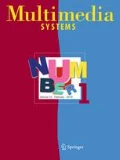Abstract
Cyberbullying can be delineated as a purposive and recurrent act, which is aggressive in nature, done via different social media platforms such as Facebook, Twitter, Instagram, and others. A state-of-the-art pre-training language model, BERT (Bidirectional Encoder Representations from Transformers), has achieved remarkable results in many language understanding tasks. In this paper, we present a novel application of BERT for cyberbullying identification. A straightforward classification model using BERT is able to achieve the state-of-the-art results across three real-world corpora: Formspring (\(\sim 12\hbox {k}\) posts), Twitter (\(\sim 16\hbox {k}\) posts), and Wikipedia (\(\sim 100\hbox {k}\) posts). Experimental results demonstrate that our proposed model achieves significant improvements over existing works, in comparison with the slot-gated or attention-based deep neural network models.




Similar content being viewed by others
References
Peter, K.S., et al.: Cyberbullying: Its nature and impact in secondary school pupils. J. Child Psychol. Psychiatry 49(4), 376–385 (2008)
Devlin, J., Chang, M.W., Lee, K., Toutanova K.: Bert: Pre-training of deep bidirectional transformers for language understanding. In: arXiv preprint arXiv:1810.04805 (2018)
Dinakar, K., Reichart, R., Lieberman, H.: Modeling the detection of textual cyberbullying. In: Fifth International AAAI Conference on Weblogs and Social Media (2011)
Reynolds, K., Kontostathis, A., Edwards, L.: Using machine learning to detect cyberbullying. Int. Conf. Mach. Learn. Appl. Workshop 2, 241–244 (2011)
Djuric, N., et al.: Hate speech detection with comment embeddings. In: Proceedings of the 24th International Conference on World Wide Web. pp. 29–30 (2015)
Badjatiya, P., et al.: Deep learning for hate speech detection in tweets. In: Proceedings of the 26th International Conference on World Wide Web Companion, pp. 759–760 (2017)
Balakrishnan, V., Khan, S., Arabnia, H.R.: Improving cyberbullying detection using Twitter users’ psychological features and machine learning. Comput. Sec. 90, 101710 (2020)
Raisi, E., Huang, B.: Cyberbullying identification using participant-vocabulary consistency. In: arXiv preprint arXiv:1606.08084 (2016)
Squicciarini, A., et al.: Identification and characterization of cyberbullying dynamics in an online social network. In: Proceedings of the 2015 IEEE/ACM International Conference on Advances in Social Networks Analysis and Mining 2015, pp. 280–285 (2015)
Aggarwal, A., et al.: Classification of fake news by fine-tuning deep bidirectional transformers based language model. EAI Endorsed Transactions on Scalable Information Systems Online First. EAI, Ghent (2020)
Lee, J., et al.: BioBERT: A pre-trained biomedical language representation model for biomedical text mining. Bioinformatics 36(4), 1234–1240 (2020)
Sergio, G.C., Lee, M.: Stacked DeBERT: All Attention in Incomplete Data for Text Classification. In: arXiv preprint arXiv:2001.00137 (2020)
Mozafari, M., Farahbakhsh, R., Crespi, N.: A BERT-based transfer learning approach for hate speech detection in online social media. International Conference on Complex Networks and Their Applications, pp. 928–940. Springer, Berlin (2019)
Pavlopoulos, J., et al.: Convai at semeval-2019 task 6: Offensive language identification and categorization with perspective and bert. In: Proceedings of the 13th International Workshop on Semantic Evaluation, pp. 571–576 (2019)
Waseem, Z., Hovy, D.: Hateful symbols or hateful people? predictive features for hate speech detection on twitter. In: Proceedings of the NAACL student research workshop, pp. 88–93 (2016)
Wulczyn, E., Thain, N., Dixon, L.: Ex machina: Personal attacks seen at scale. In: Proceedings of the 26th International Conference on World Wide Web, pp. 1391–1399 (2017)
Chawla, N.V., et al.: SMOTE: synthetic minority over-sampling technique. J. Artif. Intell. Res. 16, 321–357 (2002)
Hinton, G., Vinyals, O., Dean, J.: Distilling the knowledge in a neural network. In: arXiv preprint arXiv:1503.02531 (2015)
Agrawal, S., Awekar, A.: Deep learning for detecting cyberbullying across multiple social media platforms. European Conference on Information Retrieval, pp. 141–153. Springer, Berlin (2018)
Dietteric, T.G.: Approximate statistical tests for comparing supervised classification learning algorithms. Neural Comput. 10(7), 1895–1923 (1998)
Nuzzo, R.: Scientific method: Statistical errors. Nat. News 5067487(487), 150 (2014)
Acknowledgements
Dr. Sriparna Saha gratefully acknowledges the Young Faculty Research Fellowship (YFRF) Award, supported by Visvesvaraya Ph.D. Scheme for Electronics and IT, Ministry of Electronics and Information Technology (MeitY), Government of India, being implemented by Digital India Corporation (formerly Media Lab Asia) for carrying out this research.
Author information
Authors and Affiliations
Corresponding author
Additional information
Publisher's Note
Springer Nature remains neutral with regard to jurisdictional claims in published maps and institutional affiliations.
Rights and permissions
About this article
Cite this article
Paul, S., Saha, S. CyberBERT: BERT for cyberbullying identification. Multimedia Systems 28, 1897–1904 (2022). https://doi.org/10.1007/s00530-020-00710-4
Received:
Accepted:
Published:
Issue Date:
DOI: https://doi.org/10.1007/s00530-020-00710-4




